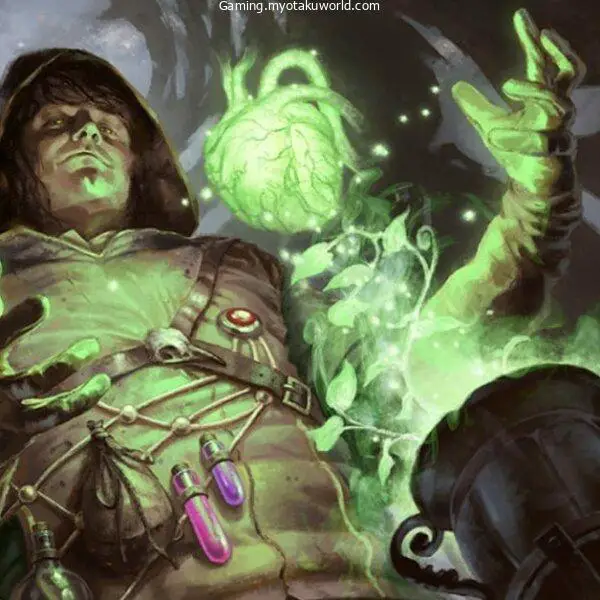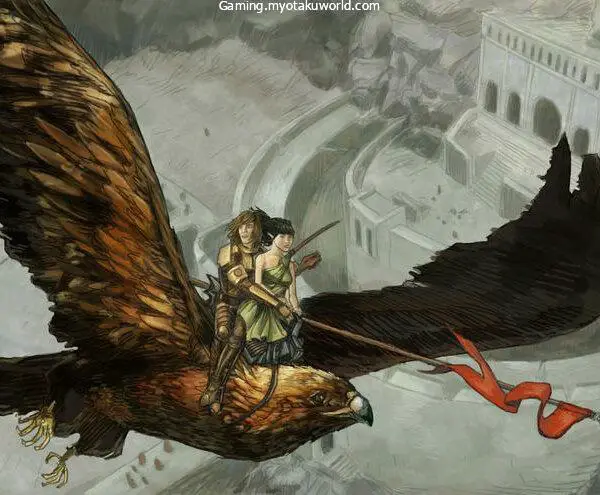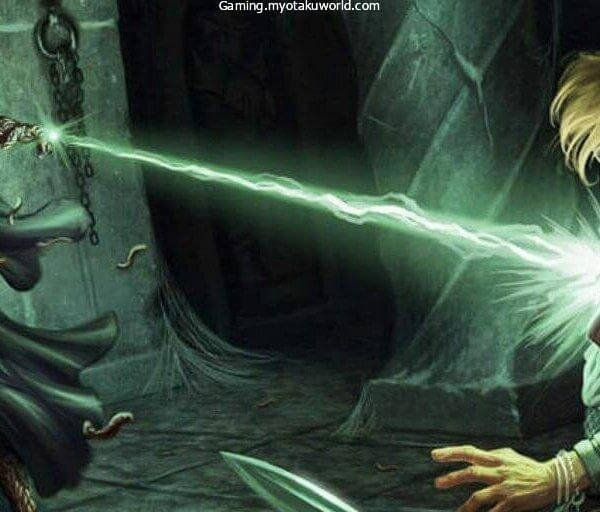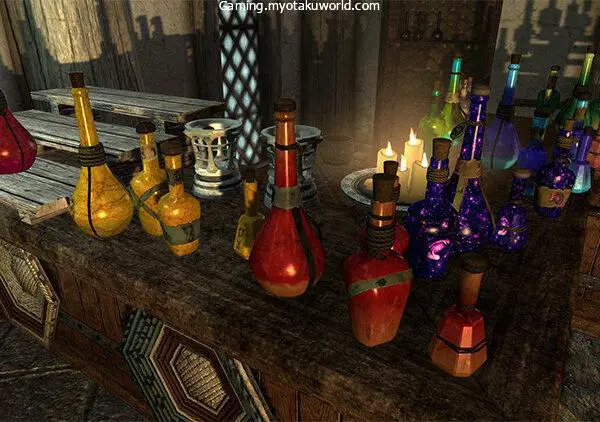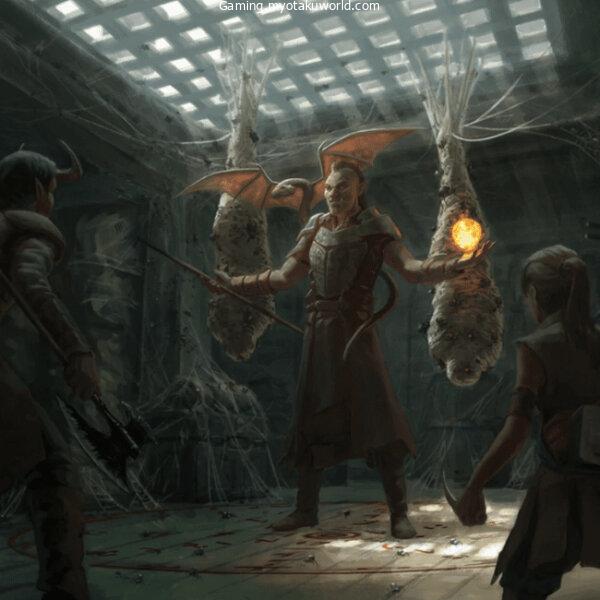You can choose a spot within a range from which a sphere of light with a 60-foot radius will radiate. The spherical emits brilliant light for 60 feet and then faint light after that.
The light emanates from and moves with the object whether you choose a point on one that is either being worn or carried by you or not.
The light is completely blocked when an opaque object, like a bowl or helm, is placed over the afflicted object.
The Daylight 5e spell that caused the darkness is dispelled if any of this spell’s areas overlap with one made by a spell of third level or lower.
Casting Time: 1 action
Range: 60 feet
Components: V, S
Duration: 1 hour
School: 3rd-level evocation
DAYLIGHT 5E
The Dungeons and Dragons spell Daylight, with its deceptive advertising, irritates players to no end. Daylight is still a great old utility spell, even though it might not provide the vampire-weakening sunshine that players want to use.
We’ll go over the specifics of the spell’s rules, offer DM advice, and offer some suggestions for using Daylight in 5e.
WHO CAN CAST DAYLIGHT IN 5E?
The following classes have Daylight on their spell list:
The following subclasses get Daylight for free:
WHAT DOES DAYLIGHT DO IN 5E?
Daylight creates a 60-foot radius of bright light emanating from a point and an additional 60 feet of dim light.
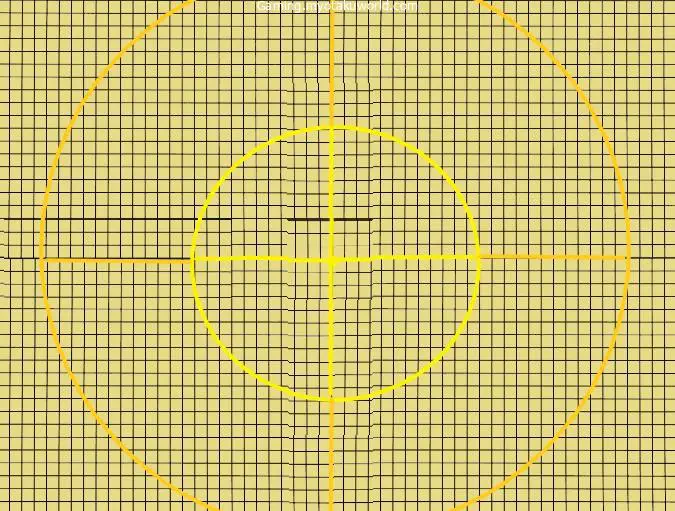
The yellow circle represents the area of bright light; the orange circle represents dim light
Daylight can also be cast on an object, which will radiate light in the same area of effect. The light will also follow the object. Completely covering the object with a non-transparent object blocks the light.
Finally, Daylight spells magical darkness caused by a spell of 3rd level or lower (like the spell, Darkness) if any part of the spell overlaps with it.
Daylight lasts for one hour and does not require concentration to maintain.
WHAT ARE THE RULES FOR DAYLIGHT IN 5E?
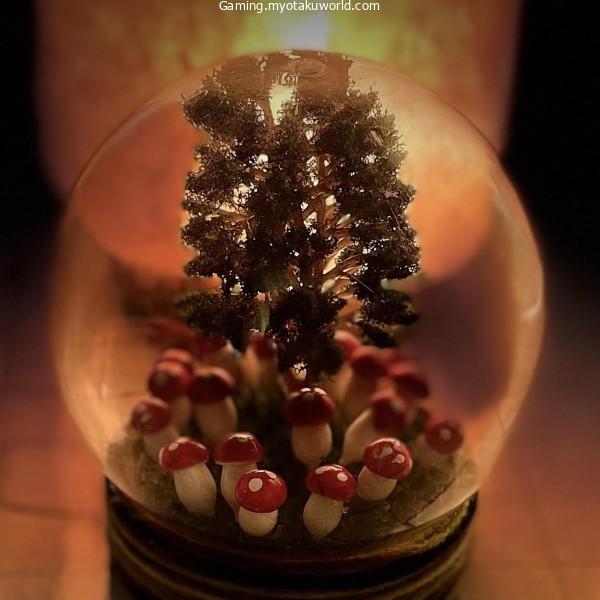
The following are the rules for Daylight in D&D 5e:
- Sunlight does not make daytime. Daylight does not make real sunlight, which is confirmed in this Sage Advice thread. This means that vampires, drow, kobolds, and other creatures that are sensitive to sunlight will not be affected by it.
- And in another, JC adds that “a spell creates sunlight only if its description says so,” which Daylight’s doesn’t (unlike spells like Sunbeam and Sunburst).
- “An upcast Daylight spell can only dispel a darkness-creating spell of 3rd level or lower, no matter which spell slot was used” (SAC 17). This player argument was finally put to rest by the Sage Advice Compendium.
- Casters can’t fight with growing levels of Daylight vs. Darkness because there’s nothing that makes them better at getting rid of the opposite effect as they level up. In short, Daylight always wins over Darkness, even when it’s cloudy.
- But Darkness can be made so that Daylight can’t get rid of it. If Darkness is really raised to level 4, Daylight won’t be able to get rid of it. Darkness also won’t dispel Daylight. If the two places meet, Daylight wins, because it gives off both bright and dim light.
HOW DO I USE DAYLIGHT IN 5E?
Here are a few ways to use Daylight in DnD 5e:
- Dispel the Darkness spell. This is Daylight’s most potent in-combat application. Darkness can be absolutely devastating for your party, giving a disadvantage on all attack rolls and the inability to cast spells that require sight. Daylight is 100% worth the spell slot to remove this hindrance and re-level the playing field.
- Light up naturally dark places. If someone in your party lacks darkvision, they’re going to need a source of light if they don’t want to be blinded every time your party goes somewhere dark. While there are plenty of other ways to get this done, Daylight is by far the most effective for lighting up an entire place for an extended duration, ensuring that your group’s human can see all the nooks and crannies of the ancient dwarven city you’re plundering; er, discovering.
- Counter creatures that rely on dim light or natural darkness. Shadow Demons and Cloakers have a disadvantage on attack rolls and perception checks in bright light, and Banderhobbs, Boneclaws, Meazels, Star Spawn Manglers Shadows, and Young Shadow Dragons can try to hide as a bonus action with Shadow Stealth while outside of bright light. That’s an admittedly small list, but other creatures benefit from darkness in other ways. For instance, any creature that’s relying on shadows or darkness to hide from you will be instantly revealed by a Daylight spell (cover permitting). After all, “you can’t hide from a creature that can see you” (PHB 177).
- Use as a signal, flare, distraction, etc. There are tons of fun ways to use Daylight’s massive range and brightness. For example, casting it from afar to let your party know that it’s time to attack, retreat, get into position, etc. is a good long-distance communication method in non-bright places. It can also be used to be found if you’re separated from your group as a sort of flare. Or, attach it to an arrow, shoot it far away, and watch as the dumb goblins go chasing after the bright thing while you sneak right into their lair. Similarly, you can cast Daylight on an object and then give it to your party’s tank before entering a dark room, acting as a sort of soft taunt effect that makes enemies more likely to attack them.
- Use it as a “torch.” The ability to cast Daylight on an object and then cover/uncover it at will is handy — very much like Gandalf with his crystal light staff thing. Obviously, this isn’t a great option for stealth missions, but if you want to know exactly what’s ahead of you, it’s hard to do better than Daylight. And if something is too far away to see, you can always toss your Daylight faux-torch to whatever you’re trying to get a gander at.
- Roleplay for bonus effects. In certain roleplaying scenarios, a DM might rule that whipping out such a bright object could have bonus effects (advantages on certain ability checks for intimidation, performance, deception, and persuasion come to mind).
IS DAYLIGHT 5E A GOOD SPELL?
No, Daylight isn’t a good spell in DnD 5e — if you’re trying to optimize for combat. Daylight’s main utility is removing the Darkness spell — which isn’t bad, but I mean, Dispel Magic or Counterspell could also get that done (plus a whole lot more in combat).
That being said, Daylight’s utility can be incredible depending on the type of adventures you go on. If you’re constantly delving the deep dark places of the world and your DM is a real stickler for the rules of light, Daylight might come in clutch quite often.
A lot of other things are great about Daylight: it’s massive, has no concentration requirement, lasts for an hour, and can be carried around on an object for continuous utility.
Not to mention that the roleplaying potential is fairly significant with a spell-like Daylight, especially if you’re building out a solar/radiant character.
DAYLIGHT 5E COMPARED TO SUNBEAM AND SUNBURST
Sunbeam, at level 6, and Sunburst, at level 8, both make real sunlight. The last line of the spell description for Sunbeam says, “This light is sunlight,” and the first line of the spell description for Sunburst says, “Bright sunlight flashes.”
There are many other ways in which these spells are different from Daylight, but this shows that the Daylight spell does not make sunshine.
DAYLIGHT 5E DM TIPS
If your players are upset that Daylight doesn’t count as sunlight when fighting vampires and other monsters, you can make it so that it does.
Be aware, though, that this will be very powerful in a game with a lot of vampires since Daylight is also a 1-hour spell with a large area of effect that doesn’t require concentration. This makes it almost certain that a vampire has nowhere to run.
A good way to find a balance would be to take away one of these benefits by making the spell shorter, adding a concentration requirement, making it smaller, or doing a mix of all three.
From my point of view, Daylight does not need to be changed. I agree that it doesn’t make sense that a spell called “Daylight” doesn’t make enough sunlight to mess with a vampire, but the spell was made with those other benefits in mind.
Even though Daylight might not be the best spell in the game, it is very useful when an enemy casts Darkness.
SIMPLE DAYLIGHT 5E SPELL TEXT
Daylight: (3rd-level conjuration, 60 feet, 1 hour, V/S) Make a sphere with a diameter of 60 feet that gives off bright light and dim light for another 60 feet.
May be aimed at an object that isn’t being worn or carried; the light shines from the item and moves with it. If you completely cover the affected item with something opaque, the light can’t get through.
If any part of this spell’s area overlaps with an area of darkness made by a spell of 3rd level or lower, the spell that made the darkness is broken.
FAQs
Can Daylight be used to blind enemies in combat?
No, Daylight does not have any inherent ability to blind enemies. However, it can be used to reveal hidden creatures or objects within its area of effect, and it can make it more difficult for creatures that have sensitivity to bright light to see.
Is Daylight considered a concentration spell?
Yes, Daylight is a concentration spell, which means that the caster must maintain concentration in order to keep the spell active. If the caster takes damage or performs certain other actions, they may need to make a Constitution saving throw to maintain concentration.
Can Daylight be used underwater or in other unusual environments?
Yes, Daylight can be used in underwater environments, as well as in other unusual environments such as caves or forests. However, the spell’s effect may be diminished or altered depending on the environment.
Can Daylight be used to harm undead creatures?
No, Daylight does not have any inherent ability to harm undead creatures. However, it can be used to weaken undead creatures that have a vulnerability to radiant damage, which is a type of damage that is often associated with holy or divine power.

